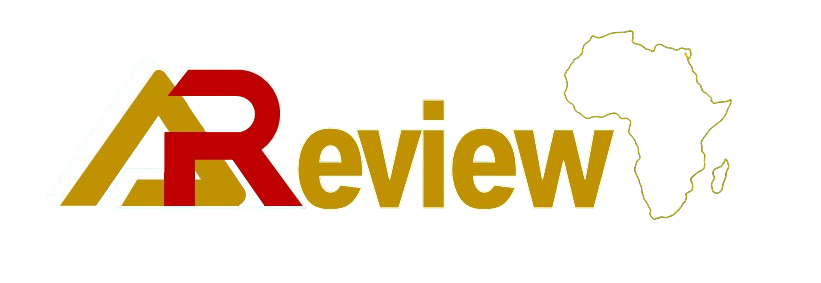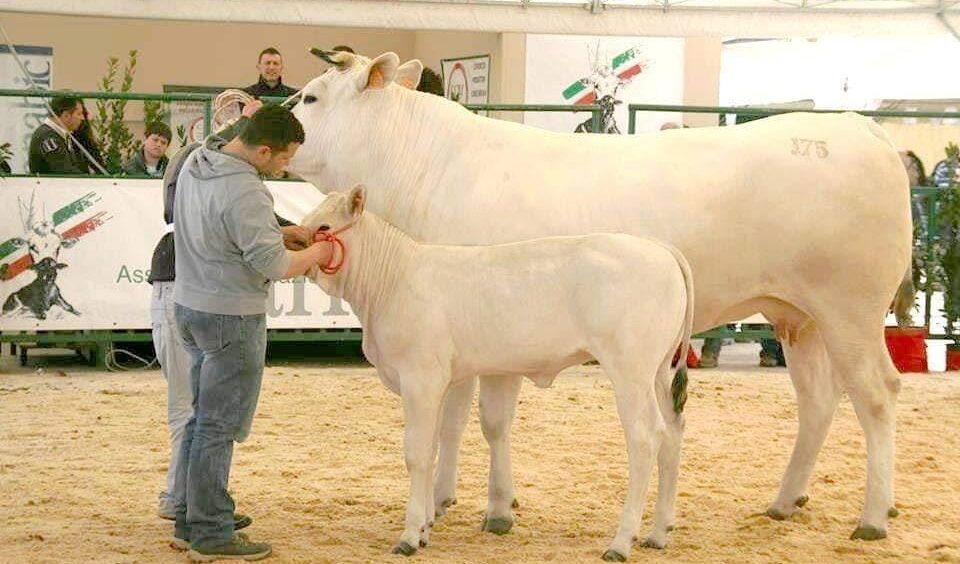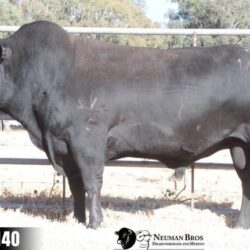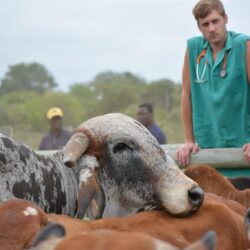Little Miracle follows in the footsteps of the first cloned calf, Michelle, born on 29 June.
The clonings are proudly South African, with two local experts – Dr Gert Jordaan, a reproduction specialist, and Dr Niel van Zyl, a veterinarian from Parys – responsible for both.
The process uses stem cells from a top cow’s tissue which are cultivated and placed in the enucleated egg cell of a cow. An embryo developed from this is implanted in a recipient cow.

Photo: Christiaan de Jager
Read more: First fully South African cloned calf born
De Jager told African Farming that Little Miracle’s mother is Seriousa Della Favorita, a three-times Italian champion.
Two of her daughters, Vienna and Diana, also became national champions. Seriousa is the mother of the bull Asso, which has the highest genetic index for Chianina traits in Italy.
Michelle was created from the 12-year-old Chianina cow OL 828.

Photo: Christiaan de Jager
The first cloned animal in Africa was the Holstein calf Futhi, born in 2003 in Brits after scientists in England had already created a cloned sheep, Dolly.
Futhi was born thanks to Dr Morne de la Rey and Robert Treadwell of Embryo Plus in Brits, and Prof Gabor Vajta, a Danish embryo specialist.
CLONING CREATES NEW POSSIBILITIES
The idea of cloning came to De Jager after he acquired top cows in Italy that were at the end of their production life. He couldn’t obtain embryos from these animals so he started freezing stem cells to clone the cows later and thus use their valuable genetic material.
In 2022, he bought a Brahman cow, R10 07-111 Stella, for R425 000 at Llewellyn Labuschagne of R10 Brahmans’ 50th production auction in Letsitele. Labuschagne considered her the best cow he had bred. She was twice the national champion Brahman cow and twice an interbreed champion.
“However, she was already 15 years old. Due to her age, and the fact that she was used by R10 Brahmans for embryo production, it was difficult to get her pregnant again. She was placed in an embryo programme for more than a year and only three embryos were obtained from her,” says De Jager.
From those embryos, one heifer was born with Sir Lawford, a bull from the JDH Brahman stud in Texas, US, as the sire. The other two pregnancies resulted in two bull calves from the American bull V8 191/7. V8 191/7’s mother, Miss V8 464/6, was crowned world champion a few years ago.
Because Labuschagne was so fond of Stella, De Jager returned her to him for her “retirement” in a camp near his house.
UNLIMITED OFFSPRING POSSIBLE
De Jager says: “You can improve your herd’s genetic traits with embryo flushing, but an old cow that has already produced embryos doesn’t always offer possibilities for more successful flushings.
“With cloning, however, you can breed an unlimited number of calves from one cow, which are then exact replicas of the cow. You can also freeze the stem cells and use them later.”
Although cloning is not cheap, the possibilities are unlimited because you can take your herd to another level. A calf from Stella, for example, can be obtained for R150 000, much less than her purchase price of R425 000.
The cow “lives on” and her calf will be a “dream animal”.

Photo: Christiaan de Jager
‘FLUSHING’ MICHELLE
As soon as Michelle has her first calf, De Jager will have her egg cells aspirated and immediately begin producing embryos with different bulls to get as much breeding material out of her as possible. He considers these investments “absolutely worth it”.
He flushed Seriousa in Italy, where he also has farming interests, and implanted embryos from her in some of his cows in Southern Africa, but none of the embryos has taken so far. He then cloned her instead.
“If it weren’t for cloning, my entire investment in this top mother line would have been lost.”
The O-La-La herd is largely composed of embryos from Italian champions. This deeply rooted breeding material is occasionally brought to market, such as on 24 September when Chianinas will be sold in the BKB auction pens in Ermelo.
De Jager says criticism of cloning is misplaced and rooted in ignorance. “Just as you clone a plant with a cutting, a calf or lamb can be bred from a piece of tissue. So it is merely a duplication of the exact, original breeding material.”




